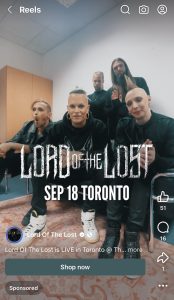This book is designed as a supplement for a third year course in communication dedicated to the study of audiences, appropriately named “COMM 3P18: Audience Studies.” In September 2023, this course undertook the study of contemporary audiences, approaching it through the lens of participatory culture, critically interrogating the productivity of fans and active audiences in contemporary culture. This version of the book continues this into 2024. This course is not intended to simply be an opportunity for me (the professor) to pontificate (or to profess), to lecture to a passive audience (students, receiving knowledge and then regurgitating it in essays and exams as proof of receipt). Rather, it should serve as a laboratory for an active audience (in many senses of the word). Throughout the term, students are expected to query key concepts in the emerging field, challenge the insights of researchers investigating emerging phenomenon, and grapple with changes in business practices and a promotional environment where audiences have to be managed, not merely cultivated or addressed. Students ponder and debate issues in seminars, consider case-studies from recent news, and produce original research. This book is designed to present, in a user-friendly form, those key concepts and emerging research (and interesting case-studies) in order to highlight the fascinating nature of interactive audiences that define our contemporary media environment. As such, this book is not only investigating active audiences, it is the product of them.
I like to start the course by challenging students to think of how they are members of an audience. In 2023, I gave the example of how I was a member of an audience in the months prior. Together with my family, led by the fascination of my youngest daughter, I once again “got into” that year’s Eurovision contest. If you aren’t familiar with it, I shared the following two videos prior to my first lecture:
Why did I share these videos? Yes, I think they’re fun. The energy in them is a good place to start a course (or a book). I also think they demonstrate some key entry-points into the specific character of (inter)active audiences in our contemporary participatory culture. For one thing, when traveling in Liverpool, England in 2024 (adrift in Beatles fan-based tourism), my family caught glimpses of structures set up as Instagram fodder for Swifties who had just been there for her concert the month prior.

But my youngest daughter was most excited to see a sign of the competition that was hosted in the city the year prior.[1]

Incidentally, Lord of the Lost popped up a year later into my Instagram feed in the form of a promoted post informing me they were playing a concert in Toronto.

Algorithms picking up on audience desires and not just feeding them, but helping construct them — this is a fascinating feature operating in the background of a lot of audience culture today. In addition, the Eurovision Song Contest (ESC) does not just invite audience interaction through public votes to determine the winner (though it does depend on this – and 2023 marked the first year that fans around the globe could vote rather than just members of participating nations). As Carniel notes, there are “complex personal and cultural interactions between people and texts, such as the ESC, that manifest as participatory culture and global fandom”[2]. The contest’s website cultivates its fandom, constantly reminding fans of previous performances and previewing upcoming chances to participate[3]. Fan-produced sites and social media discourse drive the phenomenon further. In fact, Eurovision has been used to demonstrate “how Internet-based social technologies mediate [televisual] events, acting variously as a completely separate sphere of dissemination, or a complementary channel to the TV broadcast”[4].
Who, then, is producing the phenomenon that is the ESC? It is surely, not just the executives in television studios. “In the contemporary ESC, it is no longer possible to entirely separate the fans and audience from the production and culture of the contest itself”[5]. Fans consume their favourite performances (or recirculate them, as I have done here), and they argue over them too via fan-made websites and dedicated channels on YouTube:
Of course, audiences aren’t restricted to any single platform. While audiences can get information in a straightforward fashion about the contest (see https://www.newsinenglish.no/2024/05/12/norway-hit-bottom-at-chaotic-eurovision/)[6], they can also interact with each other, questioning the results and sharing their opinions (https://www.reddit.com/r/eurovision/comments/1cpwu5v/norway_did_not_deserve_dead_last_at_all/).
This quick example of the Eurovision Song Contest demonstrates many ways that people are audiences for media but also how audiences do things with media. This book gives students a chance to grapple with key concepts and discourses surrounding audiences and sets the stage for hopefully interesting discussions in lectures as well as providing examples for students in advance of them sharing their own examples in seminars of how audiences produce their own content and interact with communication media. It demonstrates the vivacious character of audiences today, and makes sense of the participatory cultures that both facilitate such activity and which are further constituted by it[7]. Audiences matter. And while there are a wide variety of ways to study audiences (and some of them are introduced in Chapter 1), this book seeks to address audiences as nodes of participatory, networked culture, examine the circumstances whereby fan-audiences engage in meaningful participation in media culture, and present fandom as a model of twenty‐first‐century production and consumption practices.
This book follows the same structure as the course upon which it is based. It is organized into twelve chapters corresponding to twelve different ways of conceptualizing fans and participatory culture in our contemporary moment.[8] The twelve areas are not an exhaustive survey of fan foci. We could have specific chapters on “TV fandom” or “film fandom” or “music fandom” but instead have chosen wider “genres” of fandom that transcend specific media. Ultimately, as the Eurovision examples demonstrate, music and television fandoms intersect and all media and all audiences ought to be reflected in this course. This book will reflect my particular window onto the world; I look forward to seeing and hearing about student perspectives as we collectively learn about audiences and undertake the study of them.
- Both of these examples act as evidence of fan-tourism or pilgrimages (especially in the case of Taylor Swift fans -- see https://www.bbc.com/news/articles/c5113266l0xo for a description of how Liverpool transformed itself into "Taylor Town") which do not just provide a boost to the local economy but also create a value-added proposition -- read "immersive experience" -- for fans. As audience members seeking to go beyond simply listening to music or attending shows, the experience arguably is constituted (or at least co-created) by the fans and their interactions. ↵
- Jessica Carniel (2023) "High, Low and Participatory: The Eurovision Song Contest and Cultural Studies" in The Eurovision Song Contest as a Cultural Phenomenon - From Concert Halls to the Halls of Academia (Adam Dubin, Dean Vuletic, and Antonio Obregón, eds.) p. 163. ↵
- For instance, while promoting applicants for the 2024 contest, German applicants were advised that they could 'voluntarily show your own application to the community via TikTok - using the hashtag #EurovisionGermany2024. ↵
- Highfield, Tim, Stephen Harrington, and Axel Bruns (2013) “Twitter as a technology for audiencing and fandom: The #Eurovision phenomenon.” Information, Communication & Society, 16(3), p. 318. ↵
- Jessica Carniel (2023) "High, Low and Participatory: The Eurovision Song Contest and Cultural Studies," p. 172. ↵
- This article actually explains a lot of the background information about the 2024 contest and the political protests and confusion over the inclusion, exclusion, and relative popularity of certain contestants. Why was there so much furor or interest? Why did audiences care? This isn't a place where audience activity is seen, but where it's made sense of... ↵
- Chapter 2 will clarify that while we live in a "participatory culture" in general, audiences that form around different objects of fascination (say Eurovision, or knitting, or Star Wars or the Kardashians...) clearly have their own distinctive character and characteristics. Distinct audiences with their different foci (and different politics) are both the product of distinctive cultures and produce different cultural expressions. ↵
- There is, admittedly, a brief chapter at the end, providing some basic cues for students who want to write an essay for the course that centres their own experience. I expect that most students will write an essay about an active audience (fandom) that they're interested in, maybe even a part of. But if you want to use your own knowledge and include your own narrative as part of that analysis, well, there are "best-practices" for this (often termed "auto-ethnography" -- because such an analysis cannot be an auto-biography but rather a depiction of a culture that foregrounds or uses your own "insider knowledge". ↵

